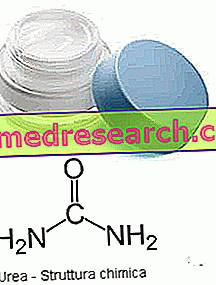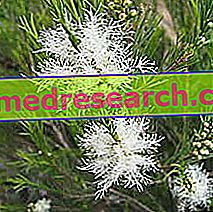Introduction
Moisturizing, emollient and softening, a cream with urea promotes skin exfoliation, making the skin shiny, soft and smooth.

By promoting the restoration of natural skin hydration, urea creams are especially useful for softening and elasticizing extremely arid, thickened and chapped skin. More generally, urea creams are surprisingly effective in reducing signs and symptoms related to skin hyperkeratinization. These cosmetic products can be prepared with dosages of urea ranging from 3% to 40%, depending on the disorder to which you want to remedy.
Urea: chemical analysis
Identified by the molecular formula CO (NH 2 ) 2, urea is an organic substance otherwise known as carbamide. Under normal conditions, urea comes in the form of a white, crystalline powder.
The molecule, very soluble in water and glycerol, is solubilized quite well also in alcohol.
Urea is naturally present in the superficial layers of the skin; in particular, the molecule is a natural component of NMF (an acronym for Natural Moisturizing Factor, the natural moisturizing factor of the epidermis ). Not surprisingly, the creams formulated with urea find indication to replenish the NMF, while increasing the water content in the stratum corneum.
Effect on the skin
Thanks to its functional properties, urea is widely used in cosmetics for the creation of creams, lotions or gels to treat highly dehydrated and thickened skin.
Precisely, urea creams possess the following properties:
- Exfoliating keratolytic properties → the application of creams with urea promotes the removal of dead cells from the surface of the skin
- Moisturizing and softening properties → effectively retaining water molecules, urea creams deeply moisturize the skin, softening the skin layer and promoting the healing of small skin cracks
After applying the product on the skin in the form of a cream, the urea is easily solubilized in the water component of the skin's hydrolipidic film: in doing so, the molecule penetrates deep into the corneocytes and, dispersing among the keratin fibers, encourages the moisturizing effect and softener on the skin.
- Emollient and calming properties → urea creams are used to repair and regenerate the skin in the immediate post-depilation
To enhance its therapeutic-like beneficial effect, a urea cream can be enriched with natural active ingredients with an emollient, moisturizing, nourishing and healing effect. The most commonly used natural assets for this purpose are:
- Aloe vera gel, Chamomile and calendula → soothing properties
- Jojoba oil, Shea butter, sweet almond oil, acai oil → nourishing properties
- St. John's wort → healing properties, indicated for sensitive, fragile and reddened skin
- Propolis → healing properties, disinfectants
Indications
We have seen that urea creams are widely used to deeply moisturize the skin, effectively counteracting skin dehydration and cracking.
Keep in mind, however, that not all urea creams are the same: these dermo-cosmetic preparations differ, in fact, due to the concentration of active ingredient present in them. In cosmetics, urea is used at concentrations varying from a minimum of 3% to a maximum of 40%. At higher concentrations, urea is generally used to prepare medicated creams for the treatment of different dermal disorders.
The table shows the most common uses of creams with urea, distinguished on the basis of the concentration of active ingredient.
| Concentration of urea in a cream | Cosmetic / therapeutic uses of urea cream |
<10% |
|
10-20% |
|
20-40% |
|
> 40% |
|
Application
For the treatment of calluses, calluses, dry / chapped skin and hyperkeratosis in general, it is recommended to apply the cream with urea 2 or more times a day (as indicated by the doctor) on the surface of the skin. The massage is an integral part of the treatment: to facilitate the absorption of the product more quickly, it is advisable to massage the dehydrated skin for a long time. In subjects predisposed to skin xerosis and callosity of the feet, the advice is to use the urea cream continuously: the regular and constant application of the product on the skin gives a pleasant sensation of well-being, while preventing rubbing irritation.
To give quicker relief to dry and cracked skin of the feet, a warm and invigorating footbath is recommended before treatment with urea cream
Side effects
Urea creams are well tolerated by all skin types; therefore, these formulations can be considered safe. Nevertheless, immediately after applying the cream, some patients with particularly sensitive skin suffer mild and temporary side effects, such as:
- Slight skin irritation
- Temporary sensation of burning and stinging
- itch
- Allergic reaction (rash, hives, swelling of the face, mouth and tongue): extreme and very rare cases
Contraindications and recommendations
The urea cream must not be applied to the skin in case of hypersensitivity - ascertained or presumed - to any excipient or active ingredient reported on the label.
Although urea creams do not always require a medical prescription, they should be applied to the skin only after consulting a doctor or an expert on the subject.
Before using urea creams, it is recommended to inform the doctor in the event of pregnancy, lactation, allergies and any drug therapies in progress. Some drugs can in fact interact with urea creams causing serious side effects.



